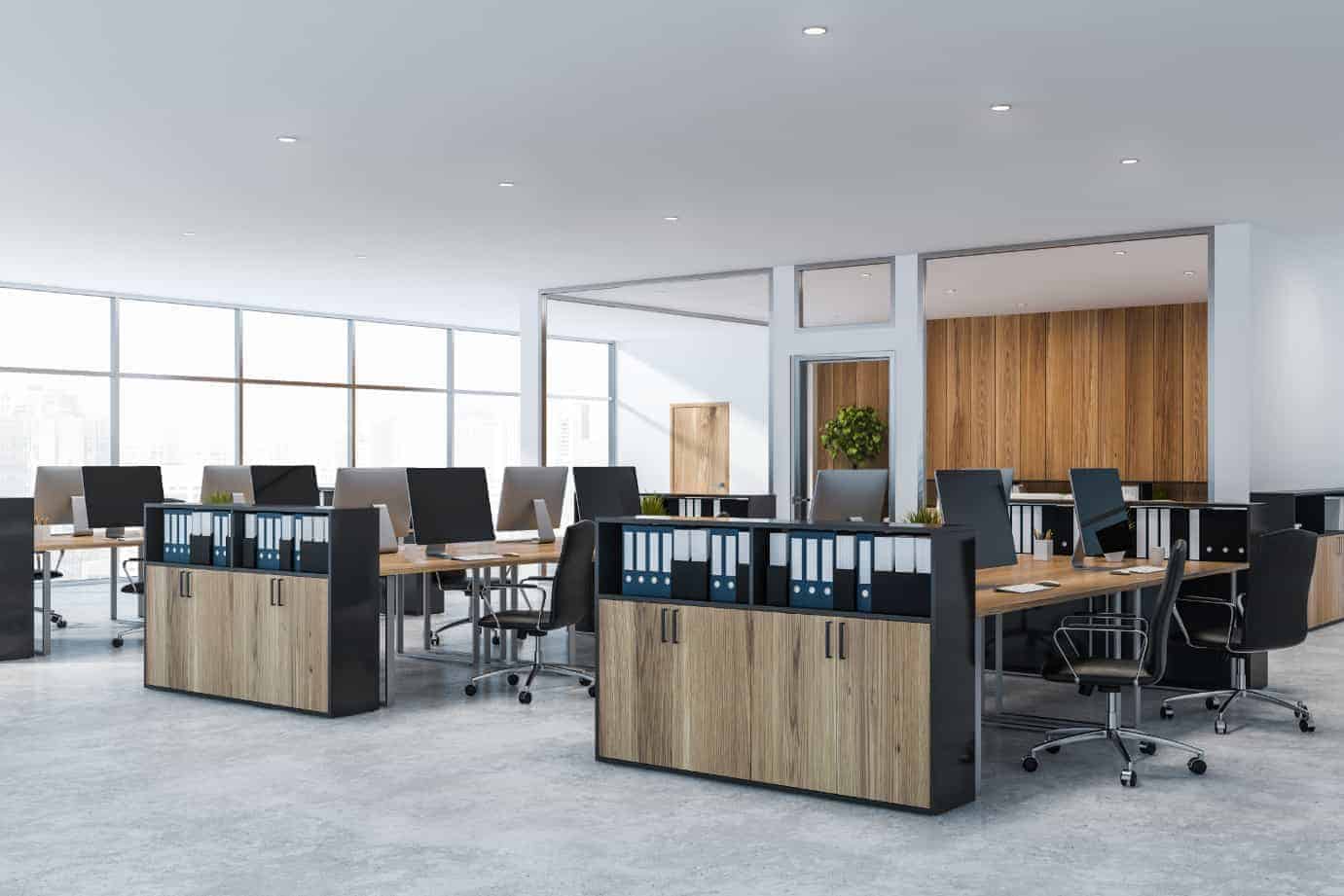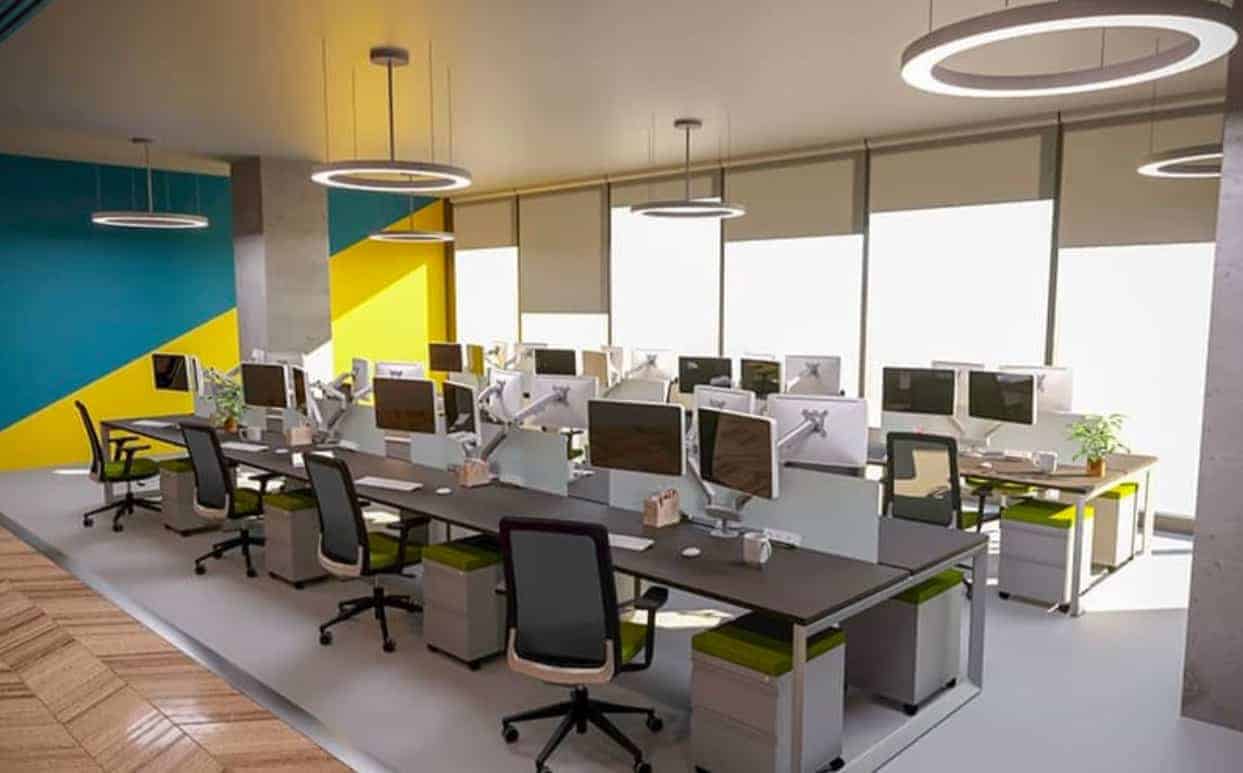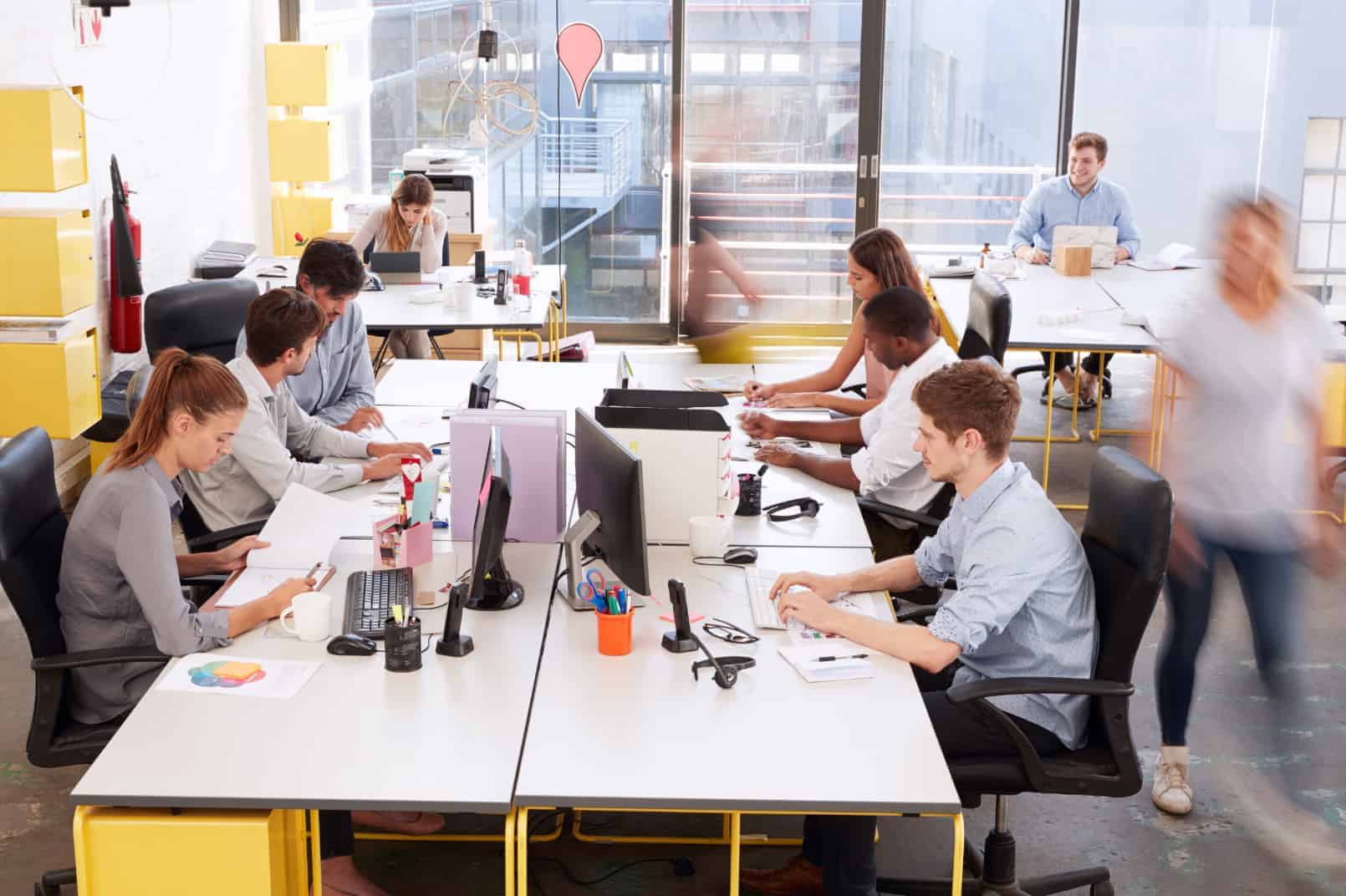
Bench Workstations for the Modern Office
Benching stations, as the name implies, are essentially elongated desks that can accommodate several employees and workstations. Businesses have embraced them for a number of reasons—they save space and money, they encourage collaboration, and they are versatile—but they have drawbacks, too. Like any piece of office furniture, benching is not a catch-all solution; however, benching does have its place in an agile office space. The rise of the open-office design helped turn benching into an office staple. Let’s explore how the use of bench workstations has evolved in today’s modern office design.
The Rise (and Fall?) of the Open Office
The rise of open-office designs led to a revolution in the types of furniture that populate the modern office, a trend that started to take hold 20 years or so ago. Gone were the days of row upon row of cubicles. Instead, companies focused on workspaces that squeezed in more workers and helped reduce office overhead. Bench-style workstations became significant elements of the open office.
About 10 years ago, the mindset started to shift again slowly when studies and employee feedback began to highlight the many problems with open-office designs. As momentum grew to rethink the open office, the entire office design and furniture industry ran into the major hurdle of COVID-19. In March 2020, most offices were abandoned as employees moved to work from home. Eighteen long months later, people started returning to offices with more regularity, presenting some challenges for employers and leading companies to think about how to redesign the office for the new reality of living with COVID-19.
Not only are businesses trying to balance the pros and cons of the open office, but they are now facing new office design and furniture considerations that the pandemic has introduced. Two of the more pressing dynamics are the new hybrid remote model and the increased focus on health and privacy considerations, including social distancing. The hybrid remote model means that offices have a lot of empty workstations throughout the work week. Could businesses save overhead by downsizing? Not necessarily, as when employees are present in the office, they tend to come in on the same days in order to meet and collaborate. This means that offices need just as many workstations as before. It is also difficult to downsize when employees are pushing for more privacy and socially distant workstations.
As we dive into the pros and cons of benching stations, you’ll notice similarities to the pros and cons of the open office. Benching is a valuable type of office furniture that can solve challenges. With options like dividers and fresh office-design strategies, it is possible to take advantage of the pros of bench workstations while minimizing some of the cons in order to suit the needs of the modern office and modern workforce.
The Pros of Benching Stations

- Increased Collaboration: Cubicles, closed-door offices, and other enclosed workspaces make it difficult for collaborative teams to work together easily. Benches, on the other hand, allow employees to work side-by-side and to consult each other freely as necessary.
- Cost- and Space-Effectiveness: Benching stations efficiently accommodate multiple employees. They are sleek and simple, optimizing space usage and reducing costs in ways that bulkier furniture cannot.

- Increased Flexibility and Versatility: In contrast to workstations that are designed for a particular use, benching stations can more easily be reconfigured to accommodate changing workflows and team structures.
- Openness: At one point, the cubicle became a negative symbol of the old-school and outdated office, isolating employees and imposing a claustrophobic bleakness on the workplace. Open workstations, such as benched workstations, provide a freer, less-confining atmosphere that may boost morale and productivity.

The Cons of Benching Stations
- Health Concerns: Sitting in close proximity to other people for extended periods can increase the risk of spreading illnesses, especially during cold and flu season.
- Lack of Privacy: Though open workspaces can create a sense of freedom for employees, they can also leave employees feeling exposed. Employees in open offices have reported experiencing a lack of privacy and feeling as though they are under constant scrutiny and supervision. It’s important for employers to balance open workspaces with more private options for employees who require them.

- Noise and Visual Distractions: Though open offices were designed to increase productivity through collaboration, the open-workstation style, including benches, can actually decrease productivity among employees working independently. Ambient noise, overheard conversations, and constant visual distractions can make it difficult for staff to concentrate, lowering both productivity and employee morale. There are some products that can reduce these distractions, but there is no alternative as effective as a private workspace.
- Clutter: It is easy to let loose papers, books, and other work materials pile up on desks, especially in a busy workplace. The workbench is a double-edged sword. It can provide a sense of openness to employees, but it can also put their messes on display, creating a cluttered and disorganized atmosphere.
- Accommodating Individual Work Styles: Bench workstations may not be suitable for all employees, particularly those who require a more private or personalized workspace.
Benching Stations for the Hybrid Remote Workforce
Many companies are working toward a hybrid model, but the challenge with that model is when a majority of the employees all come in on the same day. It makes sense for a full team to be in on the same day so that they can collaborate. Staggering the days when various departments work in the office can be one solution, but it may not work for all companies. This challenge makes it hard for companies to downsize their space to save money on overhead. Some companies have turned to subleasing to help reduce the financial burden of unused office space, sharing space on certain days of the week.
When people are in the office, they are there to work together and collaborate, but they also want some privacy and the ability to work in a safe environment. To accommodate these requirements, office designers and furniture dealers are getting creative with layouts, depending on the client’s need. Some parts of the office might be built for collaboration and, therefore, lean on open-office ideas and furniture like benching. Other parts of the office may utilize more private workstations like cubicles in addition to small huddle rooms, phone booths, and other solutions that increase privacy, minimize distractions, and allow for social distancing. There are plenty of different ways to divide an otherwise open office for the hybrid environment. Benching products with larger dividers may be one great option for this environment. The key to getting the most out of benching is to use it smartly in a flexible office environment. Here are some steps to consider.

- Determine Which of Your Employees Will Get the Most out of Benching: Decide which of your employees, teams, or departments will benefit most from an open and collaborative workspace, and which will thrive under other conditions. Moreover, determine how much benching space will need to be dedicated to one team or employee, and how much should be available on an as-needed basis.
- Determine Which Areas of Your Office Will Best Support Benching Stations: Naturally, you’ll need adequate room for benching stations, but you’ll also want to consider traffic flow, access to necessary teams, branding, and aesthetics.
- Provide a Complement of Quiet Areas, Meeting Rooms, and Breakout Spaces: As benching stations leave employees prone to distractions and vulnerable to concerns about a lack of privacy, it’s important to provide alternative workspaces where employees can focus and recharge.

- Contact a Furniture Dealer for Help: An experienced and knowledgeable furniture dealer can not only help you pick out the right benching stations for your needs, but they can also ask the right questions and work closely with you to determine those needs. Not only can they help you answer questions, but they manage logistical concerns like delivery, installation, and IT integration to make the process as easy and seamless as possible.


